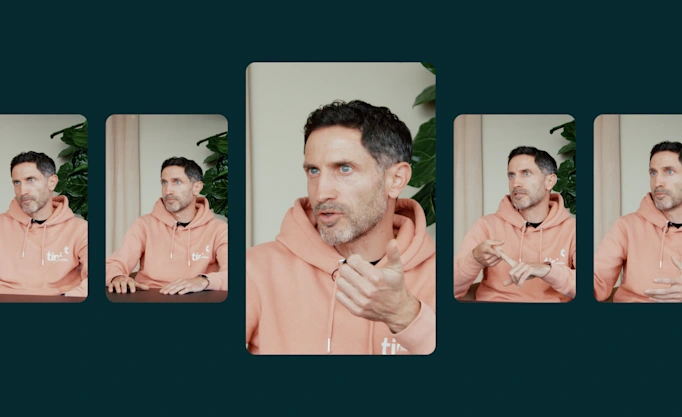Lessons from taking open banking payments mainstream: an interview with Billy Telidis

One of the biggest questions in open banking (and payments) is how and when bank-to-bank payments will gain mass adoption. In mature markets like the UK and Sweden, it’s arguably already happened. Billy Telidis, Product Manager at Tink, recounts his experience of delivering open banking payments at scale and the key lessons learned.
We caught up with Billy Telidis, Product Manager of Payments at Tink, to talk about how open banking payments have gone mainstream over the past few years.
During his time at Tink, he has launched open banking payments to millions of people, working tirelessly to create the best possible payment experiences across Europe.
In this article, he shares the key lessons he’s learned from this experience.
Billy, you’ve been on the frontlines of open banking payments at Tink for over 3 years. What’s that been like?
It’s been quite the ride! Looking back, there have been a few distinct phases. In the early days we struggled with the quality of some banks’ APIs and even some scepticism in the industry. After working closely with banks to identify errors and make the fixes we gradually approached a stage of maturity in some markets, like the UK and Nordics, where the user experience actually became competitive.
Industry perceptions lagged behind a bit, though. I remember demo-ing our payment flows and waiting for the ‘aha’ moment when the audience realised just how far we’d come. Now it definitely feels like we’re entering a new phase where open banking has proven its product-market fit in a range of payments use cases. Finding and executing on those use cases has been crucial.
One of the biggest changes in the last year or so has been the surge in merchant awareness and demand. Where before we had to spend time educating customers, now they come to us and tell us how and where they want to implement open banking payments. Plus, our product teams spend less time bug-fixing and more time on optimisation and scalability nowadays.
Why was it so important for you to prove open banking’s product-market fit early on?
Well, our focus has always been on the top two or three use cases for open banking payments – the low-hanging fruit, so to speak. We felt that if open banking could prove itself as a better alternative for invoice payments or account top-ups, for example, and would be used in the real world at scale, the rest would follow.
This is key because ultimately a new technology won’t get adopted unless you can clearly prove that it solves a specific problem better than what exists today. This requires you to be laser-focused on actual, real-life use cases and immerse yourself in the nitty-gritty details. But once you can say, ‘Look, this is better than X because of Y and Z, and we can prove it’ – that’s a totally different conversation to ‘Here’s how we think this can potentially help you.’
So, which use cases did you prioritise and why?
Starting in early 2020, my team specifically focused on one use case in particular: invoices. This was a no-brainer for a few reasons. For one, it plays to open banking’s strengths. For invoicing and billing platforms, cost and user experience are far more important than a payment guarantee or instant settlement.
Second, there was an opportunity to drastically improve upon what was already available. Old-school, paper-based invoices have obvious flaws but newer ways of distributing invoices, such as through email, require lots of manual work from both the payer and payee too. Users have to switch between the invoice and their banking app and copy over the details just to make a one-off payment.
Digital-first invoicing app Kivra saw an opportunity to improve this user experience and simplify their operations. It was an ideal customer for us. By adding open banking payments to their mobile app, suddenly over 5 million Kivra users could pay all their bills and invoices in one interface without ever having to leave the service or manually enter their details. Paying an invoice went from being an annoying chore to something that feels effortless.
Was there a particular moment when you thought, ‘OK, now we’ve arrived’?
There wasn’t one such moment, but rather a series of milestones (and a lot of hard work) that led up to where we are today. As of now, over 50% of the population in Sweden pay their invoices through Kivra with open banking the primary payment method, resulting in millions of transactions every month. Looking back, we effectively took open banking mainstream. And while our partnership with Kivra in the Nordics is a standout success for our team, it’s far from the only one.
Let’s dive into what it took to ‘go mainstream’. How did the choice of market play a role?
Swedish consumers tend to be pretty tech-savvy nowadays. People are increasingly accustomed to transacting almost entirely online. This makes it easier when introducing a new technology or payment method, but it also means consumers expect more from the digital services they use and will gravitate towards the best experience. This definitely worked in our favour.
Regulators and banks in the Nordics and the UK have also proved to be the most forward-thinking, helping to level the playing field by introducing features like app-to-app redirect, biometrication authentication, and more. Other countries are now well on their way to catching up, especially France and Germany, but open banking payments in the UK and Nordic countries are already outperforming the incumbent digital payment methods. Open banking’s mainstream moment was always likely to be in one of these markets.
OK, so you're a few months out from the product launch. How did you prepare?
Research, collaboration, and an almost unhealthy obsession with the user experience. We work closely with our customers to get to the bottom of their pain points, in order to understand how we can best solve them. Then, when we think we’ve landed on the ideal solution or flow, we test and optimise.
It never ceases to amaze me how small details can have such a huge impact when it comes to the payment experience – a user needs to feel complete trust in the service they’re using and expects as little friction as possible. We actually summarised some of our learnings in this UX guide.
What were the results of the launch? When did you become convinced there was product-market fit?
It’s difficult to draw meaningful conclusions from data within a day, or even a week, post-launch. It takes time to get regular traffic and a large enough sample size with which to evaluate the results against your objectives.
That said, you can get an early reading through qualitative feedback from end-users. When we launched with Kivra, for example, we were delighted to see positive feedback almost immediately. It’s not often that consumers proactively praise something like a new way to pay an invoice!
At some point it becomes possible to get a meaningful sense of the conversion rate, or how many people attempting to pay an invoice are able to do so. This is obviously the key data point for our customers, and we focus heavily on optimising this in the days and weeks post-launch.
And how exactly do you go about optimising the flow post-launch?
A large amount of qualitative and quantitative research, which is time-consuming but essential to delivering the best possible user journey. When you’re introducing any new technology, the best practice is to roll it out in stages. With Kivra, we launched in a closed beta program where we had the opportunity to interact directly with end-users and collect their feedback.
As you open up the service to more and more users, that’s when our data analysts step in to monitor conversion at every stage of the funnel, on every screen. Tink has built all of its 3,400+ bank connections in-house, and our platform handles over 1bn API calls every month, so we’re fortunate to have a large pool of internal data (and experience) with which to base our hypotheses on. Only by combining hard data with user feedback – and constant feedback from our partners – do you get a real sense of where there might be pain points in the user journey and potential improvements to make.
All of this data and research matters little, though, unless you’ve set out clear objectives in advance. With all our partners we start by defining exactly what success would look like for them, and we constantly benchmark against this as we proceed. This helps you to stay focused on the insights and feedback that matters.
What lessons can be drawn from this when taking open banking payments mainstream in other countries, with new use cases?
First, think locally. Every market has its own nuances, ranging from regulatory and technical requirements to consumer behaviour. A one-size-fits-all approach will rarely deliver the success you’re looking for. At Tink, we constantly test and optimise our flows across Europe on a country-by-country basis, and we have teams dedicated to doing exactly this for every single market in which we have a presence. That’s 18 countries, at the latest count.
Next, build a collaborative partnership. Having a new technology or payment method adopted by a large section of the public doesn’t happen by magic. It takes days and weeks of working closely together with a partner to get down to the level of detail that’s required to create a truly frictionless payment experience. And listen to the end user, whether by performing your own research or sourcing it from your partner. Everyone wants a smooth experience, after all, and if you give your users the opportunity, they might just help you build it.
Finally, focus on execution. Sweat the small stuff because it matters. Making a payment is a highly sensitive process and any friction can easily turn a potential user away. So, obsess over the flow, test it constantly, and make small iterative improvements as you go. That’s the only sure-fire way to deliver an experience that users love, when it comes to payments or any other sector.
Want to know more about what open banking payments could mean for you and your business? Get in touch.
More in Open banking

2025-11-20
3 min read
Tink powers the UK’s first cVRP transaction with Visa A2A
In partnership with Visa, Kroo Bank, and Utilita, we’ve just helped demonstrate the UK’s first commercial variable recurring payment (cVRP) using the Visa A2A solution – and it’s a big step forward for how people make regular payments.
Read more

2025-06-09
11 min read
The case for “Pay by Bank” as a global term
Thomas Gmelch argues that "Pay by Bank" should be adopted as a standard term for open banking-powered account-to-account payments to reduce confusion, build trust, and boost adoption across the industry.
Read more

2025-06-02
3 min read
Tink joins Visa A2A – what it means for Pay by Bank and VRP
Visa A2A brings an enhanced framework to Pay by Bank and variable recurring payments (VRP) in the UK, and Tink is excited to be one of the first members of this new solution.
Read more
Get started with Tink
Contact our team to learn more about what we can help you build – or create an account to get started right away.




